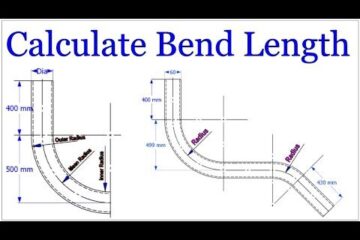In order to ensure the longevity and efficiency of your rain barrel, it is essential to properly clean and maintain it. Regular cleaning not only prevents unwanted debris from clogging the barrel but also eliminates any potential sources of bacteria or contamination. By implementing a few straightforward steps, you can effortlessly maintain the cleanliness of your rain barrel, resulting in higher-quality water for use in your garden or household chores. This article will provide you with a comprehensive guide on how to effectively clean and maintain a rain barrel, allowing you to maximize its benefits while minimizing any potential issues that may arise.
Preparation
Before you begin the process of cleaning and maintaining your rain barrel, it’s important to gather all the necessary supplies. This may include a hose, a scrub brush, a bucket, cleaning solution, and some gloves to protect your hands. Having these supplies ready will make the task much more efficient.
Choosing a suitable location for your rain barrel is another crucial step in the preparation process. It’s essential to select a spot that receives ample rainfall and is easily accessible for maintenance purposes. Ideally, the location should be close to your downspout to collect the maximum amount of water.
Clearing the surrounding area is equally important. Remove any debris, such as leaves or branches, that may accumulate near the rain barrel. Clearing the area will prevent potential blockages and make it easier to access and maintain the barrel in the future.
Emptying and Cleaning
Draining the barrel is the first step in the emptying and cleaning process. Start by disconnecting the hose or any other attachments from the barrel. Use a bucket or a watering can to empty the water onto your plants or lawn. Ensure that the barrel is completely empty before proceeding to the next steps.
Once the barrel is empty, it’s time to remove any debris and sediment that may have accumulated inside. Use a scrub brush to scrub the interior of the barrel, removing any dirt, algae, or other buildup. This step is crucial in maintaining a clean and functioning rain barrel.
After scrubbing, rinse the barrel thoroughly to remove any remaining debris or cleaning solution. Use a hose to spray water inside the barrel, ensuring it is completely clean and free from any residue. This is essential for maintaining the water quality and preventing potential issues.
Inspecting and Repairing
Inspecting the barrel for damage is a critical step in maintaining its functionality. Look for any leaks, cracks, or signs of wear and tear. Identifying these issues early on allows for timely repairs and prevents further damage to the rain barrel.
If you discover any leaks or cracks during the inspection, it’s important to address them promptly. Repairing these issues will help ensure that the rain barrel functions properly and does not waste precious rainwater. Depending on the severity of the damage, you may need to use sealants or replace certain components of the barrel.
Managing Mosquitoes
Mosquitoes can be a nuisance and a health hazard when it comes to rain barrels. Preventing mosquito breeding is crucial to maintain a safe and healthy environment. Start by regularly inspecting the barrel for stagnant water or any signs of mosquito larvae. If you notice mosquito breeding grounds, take immediate action to eradicate them.
Using larvicide is an effective method to control mosquito populations in a rain barrel. Larvicides are specifically designed to target and kill mosquito larvae without harming other organisms. Follow the instructions provided by the larvicide manufacturer to ensure safe and effective use.
Installing mesh screens on all openings of the rain barrel is another important step in managing mosquitoes. These screens act as a barrier, preventing adult mosquitoes from entering the barrel while allowing water to flow freely. Regular inspection and cleaning of the screens should be conducted to ensure their effectiveness.
Maintaining Water Quality
Maintaining the water quality in your rain barrel is essential for various purposes, including irrigation and other uses. Filtering incoming water is a crucial step in ensuring the water is clean and free from debris. Install a fine mesh filter or a first-flush diverter system to remove any leaves, twigs, or other contaminants from the collected rainwater.
A first-flush diverter is a device that diverts the first portion of rainfall away from the barrel, carrying with it any accumulated debris. This helps prevent the buildup of pollutants, such as dust or bird droppings, in the rain barrel. Regularly clean and maintain the first-flush diverter to ensure its optimal functionality.
Optimizing overflow systems is another important aspect of maintaining water quality in your rain barrel. The overflow system should be designed to divert excess water away from the barrel to prevent overflow and potential contamination. Make sure that the overflow system is functioning properly and free from any blockages.
Preventing algal blooms is crucial in maintaining water quality. Algae growth can occur in rain barrels if they are exposed to sunlight for extended periods or if there is an excessive buildup of organic matter. To prevent algal blooms, consider placing the rain barrel in a shaded area or covering it with a dark-colored material.
Winterizing the Barrel
Winterizing your rain barrel is necessary to prevent damage caused by freezing temperatures. Empty the barrel before the first frost to avoid any potential issues. Any residual water left in the barrel may freeze and expand, leading to cracks or other forms of damage.
Disconnecting attachments is another important step in winterizing your rain barrel. Remove any hoses, spigots, or other accessories and store them in a dry place for the winter. This will prevent damage to the attachments and ensure their longevity.
Insulating the barrel is a smart move to protect it from freezing temperatures. Use insulating material, such as bubble wrap or blankets, to wrap around the barrel. This helps to retain heat and prevents any damage caused by freezing temperatures during the winter months.
Harvesting Rainwater Safely
Harvesting rainwater safely involves a few considerations to ensure the water is clean and suitable for various uses. Choosing a safe roof material is important to avoid any potential contamination of the collected rainwater. Avoid using roofs with toxic materials, such as asbestos or lead-based paint, as these can negatively impact the water quality.
Preventing chemical contamination is equally important when it comes to rainwater harvesting. Avoid using any chemicals, such as pesticides or herbicides, near the rain barrel or on the roof from which you collect water. These chemicals can seep into the rainwater and make it unsafe for various applications.
Testing water quality periodically is essential to ensure that the harvested rainwater is safe and free from any contaminants. Use water testing kits to check for pH levels, bacteria, and other potential pollutants. Regular testing will help you identify any issues early on and take appropriate actions to maintain water quality.
Troubleshooting
Identifying common issues related to rain barrels is crucial in maintaining their optimal functionality. Some common issues include clogged filters, low water flow, leaks, or damaged seals and connections. Regular inspections and maintenance can help identify these problems and resolve them promptly.
Resolving water flow problems may involve adjusting or cleaning the filter, checking for blockages in the downspout or the overflow system, or repairing any damage to the barrel. Identifying the exact cause of the issue will help you take appropriate steps to restore proper water flow.
Maintaining seals and connections is necessary to prevent leaks and ensure the rain barrel functions efficiently. Regularly inspect seals and connections for signs of wear and tear. If you notice any damage, apply appropriate sealants or replace faulty components to prevent leaks and maintain a functioning rain barrel.
Utilizing Rain Barrel Water
Utilizing rain barrel water can have various benefits and applications. One of the primary uses is watering plants and gardens. The collected rainwater is an excellent source of hydration for your plants, and it can help conserve freshwater resources by reducing your reliance on tap water.
Cleaning outdoor areas, such as decks, patios, or sidewalks, can also be done using rain barrel water. Instead of using a hose connected to your home’s water supply, utilize the collected rainwater for these tasks. This not only helps conserve water but also reduces your overall water consumption.
Washing vehicles is another creative use for rain barrel water. Instead of using a hose or attending a carwash, collect rainwater and use it to clean your vehicles. This not only saves water but also reduces the amount of contaminants that may end up in the environment through car washing activities.
Apart from the mentioned uses, there are various other creative ways to utilize rain barrel water. Some examples include filling birdbaths, providing water for livestock or pets, and even using it for decorative purposes in outdoor features like fountains or small ponds.
Conclusion
Cleaning and maintaining a rain barrel is essential for maximizing its effectiveness and ensuring safe water collection. By following the outlined steps, you can ensure that your rain barrel is clean, functional, and optimally utilized. Remember to inspect and repair any damage, manage mosquito breeding, maintain water quality, and utilize the collected rainwater efficiently. By doing so, you’ll not only contribute to water conservation efforts but also enjoy the numerous benefits of rainwater harvesting.


